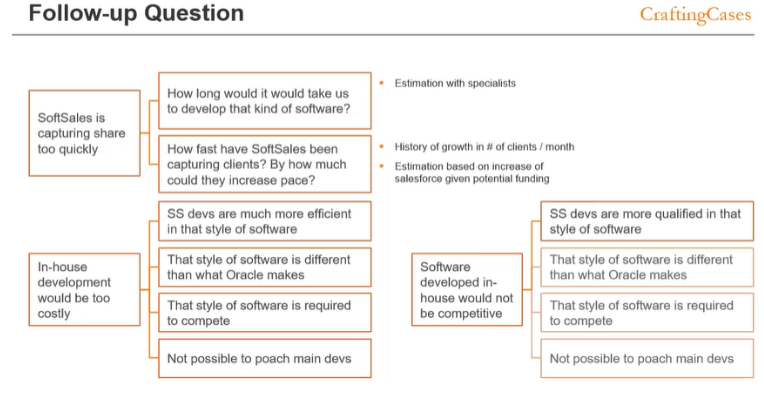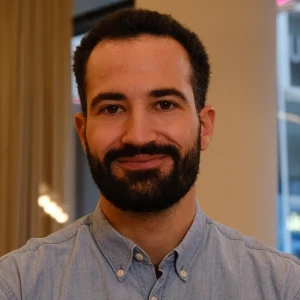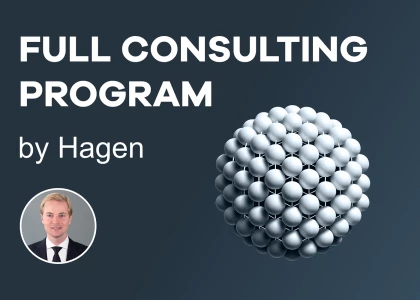Hi there!
I have been going through the Case Interview Fundamentals of CraftingCases. For the Hypothesis Testing section I was not able to follow properly. It seemed quite random how they were able to get from an interview question to a hypothesis using the "cause, effect, consequence" framework. Did anyone do this course and can help explain a way to come up with answers?
So in the example below, how do you get from "make or buy" question to the "cause, effect, consequence" content?
Example:
You said, at some point during your framework presentation,
"I’d need to test whether it would make sense for Oracle to buy SoftSales for their software vs. developing its own similar product."
The interviewer then interrupted you: "That’s interesting — how would you figure that out?"


















